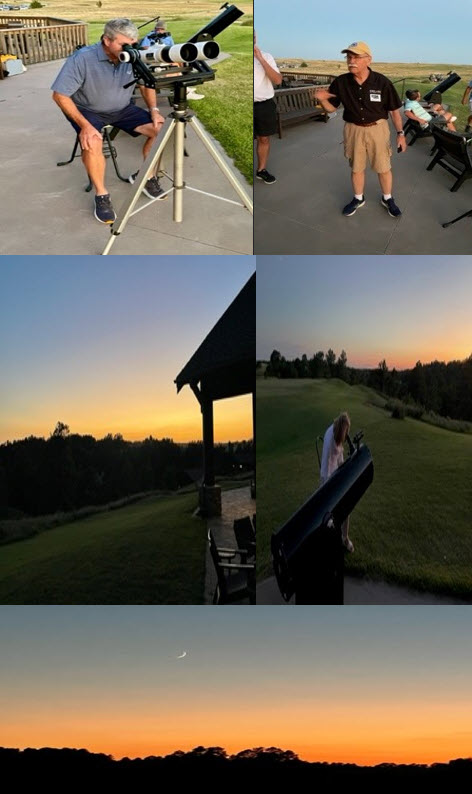Dark Skies
The dazzling world of darkness
Back in July, Kim and I joined her family on a golf vacation at one of our favorite locals…The Prairie Club in Valentine, Nebraska. Yes, you heard right…Valentine, Nebraska!
We’ve been joining family at The Prairie Club for an annual golf trip for years. Literally every time we went, we would always take note of a large telescope that sat quietly in a corner of a stairwell. Year upon year, it didn’t look like it ever moved an inch.
That all changed this past visit. We were sitting out watching the sun set after a long, hot day of golf in the sand hills of Nebraska. (The temps rose well above 100 degrees.) Then we saw the telescope being carefully wheeled out across the patio by John, who ended up being our star gazing educator that evening.
John began his evening by explaining why he was there in the area. He was there to chase the “dark skies”.
What is a dark sky?
Dark skies are a window into the universe! Some of the most stunning parts of our country reveal their true beauty after sunset.
There are actually more than 60 dark sky parks, communities and reserves in the U.S. which have been certified by the International Dark-Sky Association. To be considered an International Dark Sky Park, an area must offer exceptional views of starry skies and pristine nocturnal environment unencumbered by light pollution. (Consider that light pollution makes it impossible for nearly 80% of Americans to see the Milky Way.) Dark Sky Park visitors can expect sparkling displays of celestial objects that range from constellations and meteors to parts of our very own galaxy.
And that was certainly the case in Valentine, Nebraska. After darkness sets in, you can see billions and billions of stars and even the Milky Way. As evening turned into night, John pointed out specific constellations and individual stars, as well as Saturn and Jupiter later into the night. (The next morning, we learned that John had been out with other guests until 2:00 AM!)
Although Valentine, Nebraska, is not yet certified as a Dark Sky Park, people like John are hoping that someday it will make the list.
So where can you go to peek into the universe in a certified Dark Sky Park? Here are some recommendations:
- Utah has the most Dark Sky Parks and places on Earth.
- Virginia has more Dark Sky Parks than any other state east of the Mississippi River.
- Central Idaho Sawtooth Mountains has the only International Dark Sky Reserve in our country.
We feel very fortunate that we were finally in the right place and time for that telescope to make its way to the patio. It was a wonderful evening of amazing star gazing and dazzling darkness and will be remembered for a long time.

(The next total solar eclipse will come to North America on April 8, 2024. It will stretch from Texas to Maine with a path covering 13 eastern states and lasting approximately 5 minutes. While not really a once in a lifetime event, if you miss this opportunity, you will have to wait another 9 years to see another eclipse of its kind.)

